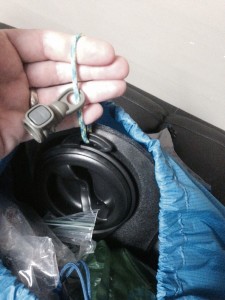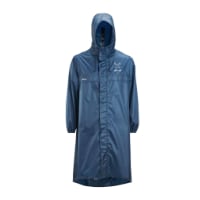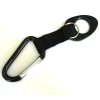Some very interesting points have been raised and I thank you all. It's interesting that some of you think there is a place for both bladders and bottles, I hadn't really thought of that.
@
wayfarer and @
PANO thank you for the links, very interesting.
I shall have to digest all the information and see what best fits my needs, also I'll have some trial runs with both systems to see how I get on with them.
One of my biggest problems when walking is that I don't take in enough water, I always think I'll stop in a minute, but never do. I've just completed a 14 mile hike and probably only consumed about 1 ltr of water, I'm sure I should have at least doubled the intake.
Just to mix things up here, last year (2014) in preparation for my second
Camino Frances, I obtained a kit online (Amazon I think) that converts any off the shelf water bottle into a disposable bladder. It came with fittings, bottle top adapters for EU and US bottle sizes and potable water tubing to attach to the shoulder harness as appropriate.
In essence, it was the "mother of all drinking straws." The only field expedient improvement I had to make was to use duck tape to double the seal where the tube passed through the bottle neck / top fitting. This stopped seepage onto my rucksack.
The only "thing" is that this worked best when you could place the full bottle, say 1.5 to 2.0 liters strapped to the top of your rucksack. I could do that easily.
I did not use this contraption until I got to Fromista, as I was starting to cross the Meseta, and I knew I would need extra potable water for that stretch. Because using reusable and recyclable water bottles is my default preference, after using an Osprey bladder with my Osprey rucksack on my first Camino (I subsequently sold it for postage), I was no more impressed with this system than with a bladder.
However, it DOES overcome the cleaning issues and the ability to add an electrolyte or flavored powder to the bottle. The bottles are FAR easier to clean than any bladder. They also share the same recycling advantage as the default .5 liter, "off the shelf" water bottle.
For my third Camino, I returned to using my, now standard, 4 - .5 liter water bottles. As I have previously explained, I must add powdered protein to my daily diet every 4 hours or so as I have a lap band on my stomach. So I need the two extra bottles to pre-mix protein solution each evening for consumption the following day. Once those bottles are empty, the empties are easily carried until they can be rinsed and refilled with potable water.
The bottom line is that, reusable and recyclable bottles provide more flexibility than does a stationary bladder, at least IMHO. Plus, even when empty, bladders extract more of a weight penalty than an empty "off the shelf' water bottle.
This said, I completely respect the opinion and preference of others who, for their reasons, prefer to use a bladder.
I hope this helps.





























